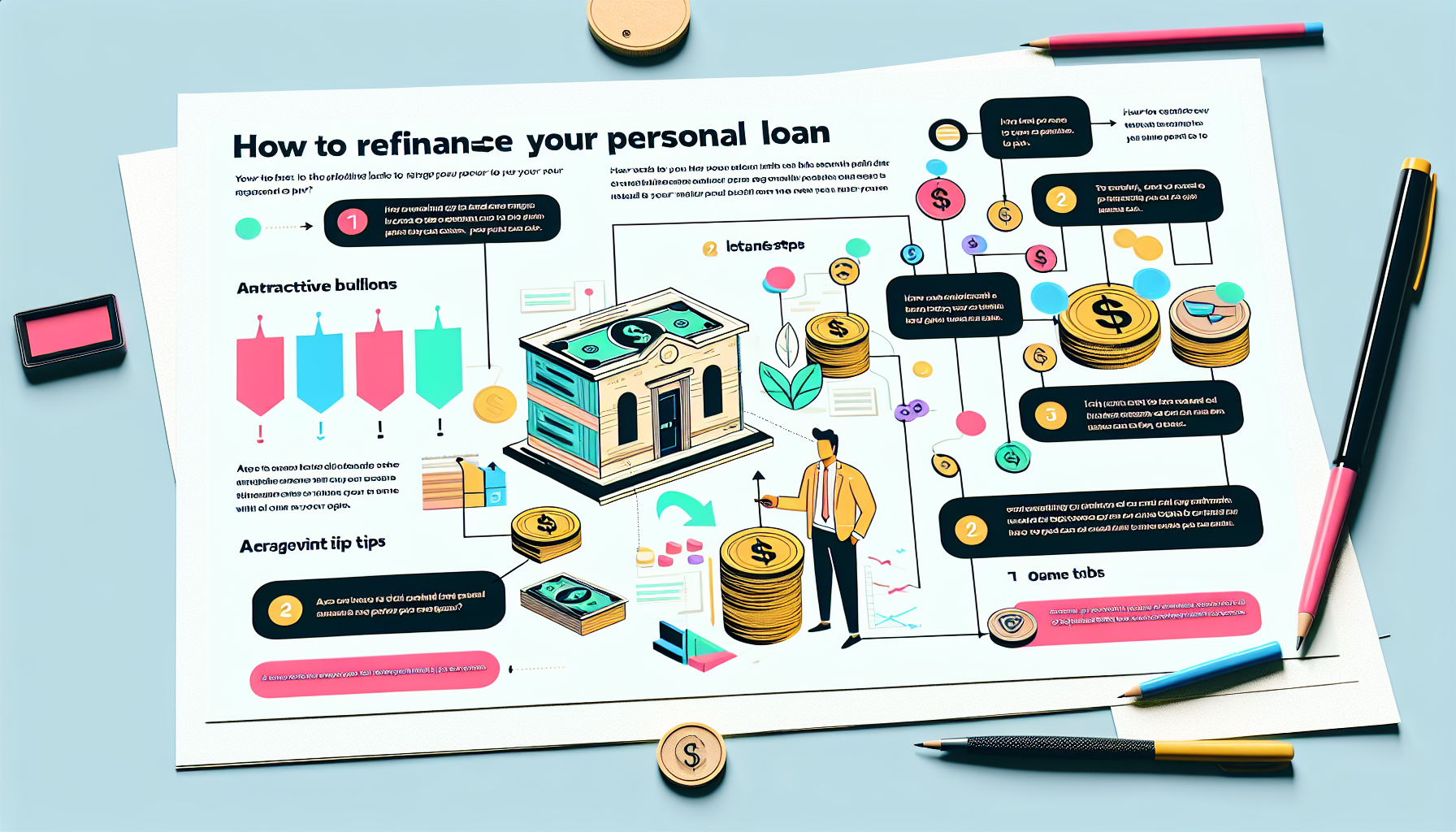Refinancing a personal loan can be an effective way to reduce your monthly payments, lower your interest rate, or modify the loan term to better fit your financial situation. However, the process can be complex, and the decisions you make along the way can have long-lasting impacts. This guide aims to provide you with essential tips and a step-by-step approach to refinancing your personal loan wisely, ensuring that you make informed choices and maximize the benefits.
Essential Tips for Refinancing Your Personal Loan
Before you dive into the refinancing process, it is crucial to evaluate your current financial situation. Start by assessing your credit score, as lenders use this score to determine your eligibility and the interest rates they can offer. A higher credit score often translates to better loan terms. If your credit score has improved since you initially took out the loan, you might qualify for a lower interest rate, making refinancing a valuable option.
Another essential tip is to shop around for different lenders. Do not settle for the first offer you receive, as different financial institutions have varying rates and terms. Utilize comparison tools online and consider both traditional banks and online lenders to ensure you find the best deal. Be mindful of any fees associated with refinancing, such as origination fees, as these can offset the savings from a lower interest rate.
It’s also important to understand the terms and conditions of your current loan. Some loans come with prepayment penalties, which can make refinancing less advantageous. Ensure you are aware of all the costs involved in paying off your existing loan early. Additionally, be clear about the new loan terms, including the interest rate, monthly payments, and loan duration, to avoid any surprises down the line.
Step-by-Step Guide to Refinance Your Loan Wisely
Begin by determining your refinancing goals. Are you looking to reduce your monthly payments, decrease the total interest paid over the life of the loan, or adjust the loan term? Knowing your objectives will help you select the best refinancing option. Create a list of priorities and use it to evaluate potential loan offers.
Next, gather all the necessary documentation. This typically includes your current loan details, proof of income, bank statements, and identification. Having these documents readily available will streamline the application process and increase your chances of approval. Many lenders offer pre-qualification processes that allow you to see potential rates without impacting your credit score, so take advantage of these tools to compare offers.
Once you have selected a lender and received an offer that meets your refinancing goals, carefully review the terms before proceeding. Ensure that the new loan’s benefits outweigh any costs associated with refinancing. If everything checks out, proceed with the application, and be prepared to wait for approval. Once approved, the new lender will pay off your existing loan, and your new loan terms will take effect. Make sure to continue making payments on your current loan until the refinancing process is complete to avoid any penalties or negative impacts on your credit score.
Refinancing your personal loan can be a strategic move to improve your financial standing, but it requires careful planning and consideration. By following the essential tips and step-by-step guide outlined in this article, you can navigate the refinancing process with confidence. Remember, the key to successful refinancing is thorough research, clear financial goals, and a careful review of loan terms. With these elements in place, you can make refinancing work to your advantage and achieve greater financial stability.


Related Posts :
What is a Personal Loan?Understanding Personal Loans: Your Comprehensive Guide
How to Personal Loans Work
How to Secure a Personal Loan Even with Bad Credit
Securing Loans with a 550 Credit Score: What to Know